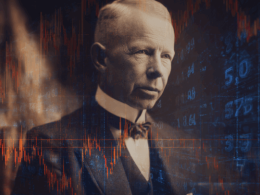Twist And Pout
September 26 – September 30, 2011
As expected, the Federal Open Market Committee opted for Operation Twist, and will sell short-term Treasuries out of its portfolio and buy longer-term Treasuries. However, the size of the Fed’s operation was larger than anticipated and more out-the-curve, sending yields on long-term Treasuries tumbling sharply. In addition, to further aid the housing market, the FOMC voted to recycle is maturing mortgage-backed securities and agency debt back into mortgage-backed securities (instead of into Treasuries, as it has been doing currently). So what’s not to like? By themselves, the Fed’s latest moves aren’t going to lead to strong GDP growth anytime soon, but they should help. The banks, however, may not be all that enthused about it. Margins just got compressed. They could make up for that by making a lot more loans, which may have been the Fed’s intent.

Click here to enlarge
In its policy statement, the FOMC said that, by the middle of next year, it would buy $400 billion in Treasuries with maturities of 6 to 30 years and sell an equal amount of Treasuries with maturities of 3 years or less out of its portfolio. That amounts to about $44.4 billion per month. In its operating directive, the New York Fed said its purchases would be distributed as follows:

Click here to enlarge
*On-the-run 10-year notes will be in the 8- to 10-year sector.
In response to the FOMC announcement, the yield on the 30-year Treasury bond fell 20 basis points, then dropped another 20 basis points the next day. The decision to recycle MBS should help to keep home mortgage rates low.
We will get some insights into the Fed’s thinking behind Operation Twist this week. Fed Governor Sarah Raskin will speak on “monetary policy and jobs” (Bernanke will testify to the Joint Economic Committee of Congress on October 4, but Raskin should provide a partial preview of what the Fed Chairman will say). Lower long-term rates should encourage consumer and small business borrowing and increase home refinancing activity. All of this is helpful news to consumers and small businesses, but will the banks lend?
Lower long-term interest rates will reduce lending margins for the banks. A steeper yield curve helped banks improve their balance sheets. With banks in a much better position than they were three years ago, the Fed is betting that a flatter curve, and margin compression, will not cause undo strain, but instead lead them to make up the difference in loan volumes. We’ll see.
The Fed is also making a gutsy call on the inflation outlook. Consumer price inflation has risen this year – overall and core – but the Fed has to set policy with an eye to the future. Commodity prices have begun to unwind, similar to the pattern we saw in 2008. Subpar growth should put downward pressure on inflation. Moreover, with downside risks to the U.S. growth outlook and evidence of a broader slowing in the global economy, the Fed feels justified in taking the risk that inflation pressures won’t ebb as anticipated.

Click here to enlarge
Prior to the Fed policy meeting, Republican leaders once again sent a letter to Fed Chairman Bernanke expressing reservations about additional monetary policy stimulus. This is bizarre. One of the most important aspects of the Fed – indeed, what many consider to be the most important aspect – is its independence. The Fed is under the purview of Congress. However, it should not be directed by Congress in its monetary policy decisions. Thankfully, Bernanke remains above the fray.
Fed Policy Outlook – Something, But What?
September 19 – September 23, 2011
Fed policymakers meet this week at a critical juncture. Growth has slowed in the last few months – no recession, but well below potential, leading to some softening in the labor market. Consumer price inflation has picked up in 2011 and August CPI figures were on the high side of expectations. In their public comments, Fed officials have been divided on the potential benefits and risks of additional policy accommodation. However, some action is expected on Wednesday. The only question is which tool the Fed will pull out of its kit.
Recall that the Fed has a dual mandate: price stability and maximum sustainable employment. “Price stability” does not mean an inflation rate of 0%. Rather, the Fed’s implicit target is 1.5% to 2.0%. The general belief is that the Fed’s two goals are really one. By keeping inflation low over the long term, economic growth, and in turn the labor market, will be stronger than it would be otherwise. In normal times, attempts to lower the unemployment rate would lead to inflation pressures, and higher inflation would lead to slower growth over the long term. However, these aren’t normal times.

Click here to enlarge
The Fed’s aggressive monetary policy has contributed to higher commodity prices, as one might expect, but it hasn’t been the only cause (increased global demand has been a more important factor and the Arab Spring boosted global oil prices). Higher commodity prices, if sustained, may be partly passed through to the consumer and we’ve certainly seen some evidence of this. The apparel component of the CPI, for example, rose more in the last four months (5.0%) than it did over the previous 23 years. It remains to be seen whether these price increases will stick. Prices of finished imported goods have risen somewhat over the last year, but they’re not falling like they were over the previous decade.
The Fed sees inflation as driven largely by inflation expectations, which act as inertia, and the amount of slack in the economy. Inflation expectations are still low. The Cleveland Fed estimates the 10-year expectation of inflation at 1.63%. The amount of slack in the labor and product markets remains high. With unemployment elevated, wage pressures are muted. However, it’s not just labor costs that matter. It’s what you get for that labor expense. There are difficulties in estimating Unit Labor Costs, which is labor expense divided by productivity, but recent figures have suggested a possible increase. That doesn’t necessary imply inflation pressure from labor (as the measure is considered relatively unreliable), but it could mean more pressure on firms to trim their workforces.

Click here to enlarge
For monetary policy, the inflation and unemployment outlooks generate considerable room for debate. Senior Fed officials have been vocal in their opinions about the appropriate stance of monetary policy and these officials are divided among the traditional camps, the hawks and the doves. The hawks, fearing inflation, are some of the district bank presidents, of which only five get to vote on monetary policy at any time. Some district bank presidents are doves, as are a few of the Fed governors. The moderates will then have the most sway.
The Fed has been open about the policy tools that were discussed in August and will be debated this week: a lengthening of the maturity of the Fed’s asset holdings, further asset purchases, and a reduction in the rate the Fed pays on excess bank reserves. Most likely, we’ll see a maturity lengthening announced on Wednesday. This is similar to the Operation Twist conducted in the early 1960s. That was considered a failure, but largely because it was offset by a lengthening of the maturities of securities issued by the Treasury. The Treasury won’t work against the Fed now.
Extraordinary Measures Needed
September 12 – September 16, 2011
Recessions that are caused by financial crisis are different than the usual downturn. Weakness is more severe and longer lasting. Monetary and fiscal policy stimulus can help limit the downside, but can’t create prosperity. Yet, policy efforts can buy some time for the private sector to recover. Long-term budget strains add to the difficulty of deciding how much to do and when to take support away. Nobody said it would be easy.

Click here to enlarge
This was not your father’s recession. In a typical recession/recovery cycle, the Federal Reserve raises rates to cool inflation pressures. The economy slows, creating some pent-up demand in autos and housing. The Fed eventually lowers interest rates, the economy begins to improve, and the pent-up demand comes roaring back. This is a different animal. Auto sales have improved off the lows, but remain far below pre-recession levels. Housing is bouncing around the bottom. A strong V-shaped recovery was never in the works.
The labor market has been the main area of concern. Without job growth, the demand for housing is going to remain subdued and consumer spending growth is going to remain stunted. Job growth hasn’t been horrible this year. Strong job growth in the early spring may have borrowed from the late spring and early summer. Nonfarm payrolls were flat in August, but that included a 45,000 strike impact, which will reverse in September. One atypical element in this recovery has been the massive job losses in state and local government. We have lost 640,000 state and local government jobs since December 2008, and continue to lose about 40,000 per month. While many rejoice in the concept of smaller government, it’s worth pointing out that these people have families and mortgages, and they spend their income. So the economic impact is a lot more than it seems. Moreover, many of these jobs are in education, which should be a priority for the long-term prospects for growth.
The White House has a proposal to boost jobs. There are a number of elements in the plan. Some are a continuation of existing stimulus, which would prevent a large fiscal drag in 2012. Others include a variety of proposals that have received Republican support in the past. The key issues are how much of the president’s proposal can make it through Congress and how it will be paid for. There’s no disagreement that the long-term budget trajectory must be corrected. However, tightening policy too soon risks dampening and prolonging the recovery. Politically, the president’s proposal may put Republicans in a bind. Obama effectively laid support for the labor market in Congress’ lap (in his joint address to Congress, he used the phrase “pass this plan” 18 times). If Congress rejects the package outright, the job market will continue to languish and Obama could run in 2012 against a “do nothing” Congress. Remember that Bill Clinton was widely seen as “a one-term president” until a government shutdown gave him a foil.
While the job package would provide some support for the economy, it’s unlikely to lead to substantial improvement in the job market. The impact of pump-priming appears to be limited given the magnitude of the economy’s headwinds.
While Fed officials appear to be divided, the hawks are a minority. More monetary stimulus is coming, but it’s unclear whether this will include another round of asset purchases or a lengthening of maturities in the Fed’s asset holdings.
Looking at Europe, it’s difficult to quantify the probability of a banking crisis, the exit of one or more countries from the monetary union, or a complete breakup. The political environment is difficult in a different sort of way than in the U.S.
Fiscal and monetary policy efforts in the U.S. may not lead to a strong recovery anytime soon, but at least we try.










